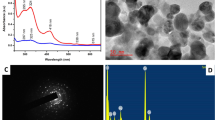Abstract
Neurolathyrism is characterized by spastic paraparesis of the legs. It is caused by overconsumption of grass pea (Lathyrus sativus L.; Leguminosae). We studied toxicity of extracts of L. sativus seeds from two different areas—Bangladesh and Canada—toward rat primary neuron/glia culture. Both extracts showed acute neurotoxicity within 24 h when the 75% ethanol extracts were added to the neuron/glia culture. Fractionation of the extracts showed that the water-soluble fraction accounted for ca. 75–84% of total toxicity in which 3-N-oxalyl-l-2,3-diaminopropanoic acid (l-β-ODAP) was present at the highest concentration. Toxicity of the water-soluble fraction obtained from Bangladeshi seeds was significantly higher than that obtained from Canada. Effects of these fractions were reversed almost completely by 1,2,3,4-tetrahydro-6-nitro-2,3-dioxobenzo[f]quinoxaline-7-sulfonamide (NBQX), an antagonist of AMPA-receptor. They were partially reversed by group I metabotropic glutamate receptor antagonists (RS)-1-aminoindan-1,5-dicarboxylic acid, or (S)-α-methyl-4-carboxyphenyl-glycine [(S)-MCPG]. Nitric oxide synthase inhibitor NG-nitro-l-arginine methyl ester (l-NAME) strongly decreased the extracts’ toxicity. These data show that the neurotoxicity of grass pea seeds is attributable to l-β-ODAP, the toxicity of which is mediated by collective effects of l-β-ODAP on the AMPA-type receptor, metabotropic glutamate receptors, and NO production.


Similar content being viewed by others
References
Getahun H, Mekonnen A, TekleHaimanot R, Lambein F (1999) Epidemic of neurolathyrism in Ethiopia. Lancet 35:306–307
Hugon J, Ludorph AC, Spencer PS (2000) In: Spencer PS, Shaunburg HH (eds) Experimental and clinical neurotoxicology. Oxford University Press, New York
Ludolph AC, Spencer PS (1996) Toxic models of upper motor neuron disease. J Neurol Sci 139:53–59
Rao SLN, Adiga PR, Sarma PS (1963) The isolation and characterization of β-N-oxalyl-l-α,β-diaminopropionic acid: a neurotoxin from the seeds of Lathyrus sativus. Biochemistry 3:432–436
Spencer PS, Roy DN, Ludolph A, Hugon J, Dwivedi MP, Schaumburg HH (1986) Lathyrism: evidence for role of the neuroexcitatory amino acid BOAA. Lancet 2:1066–1067
Johnston GAR (1973) Convulsion induced in 10-day-old rats by intraperitional injection of glutamate and related excitant amino acids. Biochem Pharmacol 22:137–140
Rao SLN, Sarma PS (1966) Neurotoxic action of β-N-oxalyl-l-α,β-diaminopropionic acid. Biochem Pharmacol 16:218–220
Rao SLN, Sarma PS, Mani KS, Rao TRR (1967) Experimental neurolathyrism in monkeys. Nature 214:610–611
Kusama-Eguchi K, Kusama T, Suda A, Masuko T, Yamamoto A, Ikegami F, Igarashi K, Kuo Y-H, Lambein F, Watanabe K (2004) Partial involvement of group I metabotropic glutamate receptors in the neurotoxicity of 3-N-oxalyl-l-2,3-diaminopropanoic acid (l-β-ODAP). Biol Pharm Bull 27:1052–1058
Ross SM, Seelig M, Spencer PS (1987) Specific antagonism of excitotoxic action of ‘uncommon’ amino acids assayed in organotypic mouse cortical cultures. Brain Res 425:120–127
Weiss JH, Koh JY, Choi DW (1989) Neurotoxicity of beta-N-methylamino-l-alanine (BMAA) and beta-N-oxalylamino-l-alanine (BOAA) on cultured cortical neurons. Brain Res 497:64–71
Kusama-Eguchi K, Ikegami F, Kusama T, Lambein F, Watanabe K, (1996) Effects of β-ODAP and its biosynthetic precursor on the electrophysiological activity of cloned glutamate receptors. Environ Toxicol Pharmacol 2:339–342
Dawson VL, Dawson TM, London ED, Bredt DS, Snyder SH (1991) Nitric oxide mediates glutamate neurotoxicity in primary cortical cultures. Proc Natl Acad Sci USA 88:6368–6371
Gonzalez-Zulueta M, Ensz LM, Mukhina G, Lebovitz RM, Zwacka RM, Engelhardt JF, Oberley LW, Dawson VL, Dawson TM (1998) Manganese superoxide dismutase protects nNOS neurons from NMDA and nitric oxide-mediated neurotoxicity. J Neurosci 18:2040–2055
Murakoshi I, Ikegami F, Hama T, Nishino K (1984) Study on the amino acid composition in the flowers of Trachycarpus fortunei H. WENDL. Shoyakugaku Zasshi 38:355–358
Kuo Y-H, Bau H-M, Rozan P, Chowdhury B, Lambein F (2000) Reduction efficiency of the neurotoxin β-ODAP in low-toxin varieties of Lathyrus sativus seeds by solid state fermentation with Aspergillus oryzae and Rhizopus microsporus var. chinensis. J Sci Food Agric 80:2209–2215
Bridges RJ, Kadri MM, Monaghan DT, Nunn P, Watkins JC, Cotman CW (1988) Inhibition of [3H] α-amino-3-hydroxy-5-methyl-4-isoxazolepropionic acid binding by the excitotoxin β-N-oxalyl-l-α,β-diaminopropionic acid. Eur J Pharmacol 145:357–359
Kusama T, Kusama-Eguchi K, Ikegami F, Yamamoto A, Kuo Y-H, Lambein F, Watanabe K (2000) Effects of β-ODAP, the Lathyrus sativus neurotoxin, and related natural compounds on cloned glutamate receptors and transporters expressed Xenopus oocytes. Res Commun Pharmacol Toxicol 5:37–55
Schoepp DD, Conn PJ (1993) Metabotropic glutamate receptors in brain function and pathology. Trends Pharmacol Sci 14:13–20
Pellegrini-Giampietro DE (2003) The distinct role of mGlu1 receptors in post-ischemic neuronal death. Trends Pharmacol Sci 24:461–478
Yun H-Y, Dawson VL, Dawson TM (1996) Neurobiology of nitric oxide. Crit Rev Neurobiol 10:291–316
Lam HHD, Bhardwaj A, O’Connell MT, Hanley DF, Traystman RJ, Sofroniew MV (1998) Nerve growth factor rapidly suppresses basal, NMDA-evoked, and AMPA-evoked nitric oxide synthase activity in rat hippocampus in vivo. Proc Natl Acad Sci USA 95:10926–10931
Lambein F, Kuo Y-H (2004) Prevention of neurolathyrism during drought. Lancet 363:657
Acknowledgements
This work was supported by the ‘Academic Frontier’ Project for Private Universities matching-fund subsidy from Ministry of Education, Culture, Sports, Science and Technology, 2002–2006. We are grateful to Prof. F. Lambein, Ghent University, Belgium, for providing grass pea seeds. We are grateful to Ms. B.S. Tomoe Higashino and Ms. B.S. Junko Akasaka for technical assistance.
Author information
Authors and Affiliations
Corresponding author
Rights and permissions
About this article
Cite this article
Kusama-Eguchi, K., Suda, A., Ikegami, F. et al. Neurotoxicity and pharmacology of Lathyrus sativus extracts of high- and low-toxicity strains. J Nat Med 60, 107–112 (2006). https://doi.org/10.1007/s11418-005-0020-4
Received:
Accepted:
Published:
Issue Date:
DOI: https://doi.org/10.1007/s11418-005-0020-4




